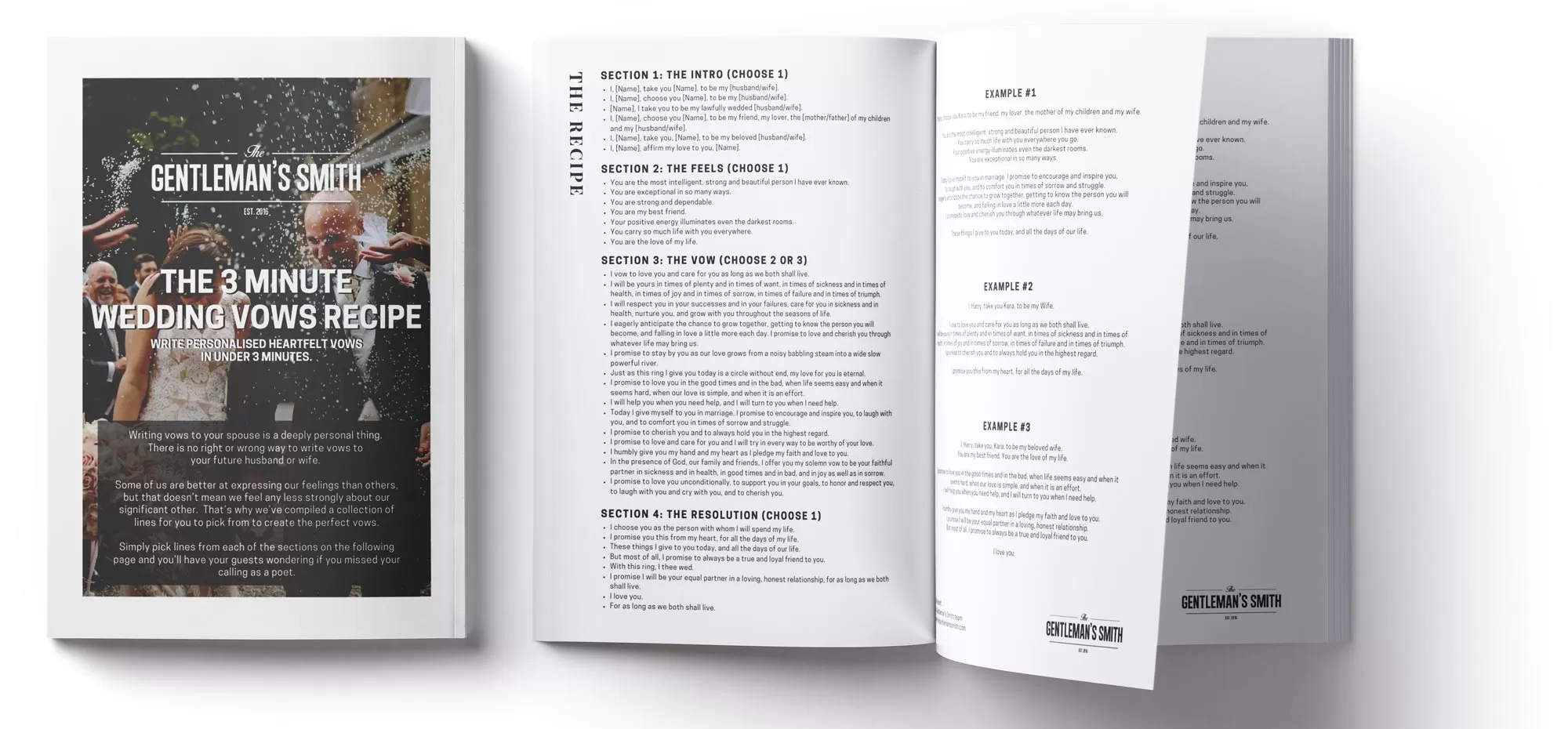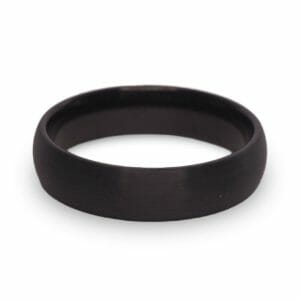The wedding ring or wedding band is a finger ring that indicates that its wearer is married, usually forged from metal, traditionally gold or another precious metal. Rings have been used in marriage ceremonies for centuries and the modern practice of exchanging rings during weddings has a Christian origin. Today, couples have the luxury of customising their rings to reflect their individual style and sentiment, making the wedding ring a truly unique symbol of marriage.
History of Men’s Wedding Rings
In Western nations, wedding rings are often forged of gold, palladium, platinum, argentium silver, titanium, tungsten, or more recently, silicone. Engravings on the inside of the ring commonly include the name of one’s spouse, the names of both spouses, the date of the wedding, or a phrase of significance to the spouses. In some cultures, the best man or maid of honor has the duty of keeping track of a couple’s wedding rings and to produce them at the symbolic moment of the giving and receiving of the rings during the traditional marriage ceremony. In Western Christianity, engagement rings are exchanged during the betrothal rite, while wedding rings are given during the celebration of holy matrimony itself.
In some Methodist Churches, such as the Allegheny Wesleyan Methodist Connection and Bible Methodist Connection of Churches, wedding rings are not worn due to the teaching of John Wesley. Certain conservative Mennonite and Quaker Christian groups do not wear wedding rings as part of their practice of plain dress. In Orthodox Judaism, only the groom declares “You are consecrated to me with this ring according to the law of Moses and Israel”; in Reform Judaism, both the bride and groom declare it.
Benefits of Customisable Rings
Customisable wedding rings offer an array of benefits, including allowing couples to express their individual style, sentiment, and love for one another in a unique way. Alternative wedding rings such as Smart rings are also being used by royals and celebrities as an alternative to classic wedding rings. Such rings can be activity trackers or communication devices allowing them to feel their partner’s heartbeat.
In Europe, the wedding ring is usually worn on the left hand, but in some countries, such as Spain, it is worn on the right hand. In some Eastern European and Central and South American Catholic countries, the ring is worn on the right hand, while in some Orthodox and a small number of Catholic European countries, Protestant Western European countries, and some Central and South American Catholic countries, the ring is worn on the left hand. In Turkey, Lebanon, Syria, Romania, and Brazil, the ring is worn on the right hand until the actual wedding day, when it is moved to the left hand. In Sinhalese and Tamil culture, the groom wears the wedding ring on his right hand, but the bride wears it on her left hand ring finger. In a traditional Jewish wedding ceremony, the wedding ring is placed on the bride’s right-hand index finger, but it is moved to the left hand after the ceremony. In Muslim countries, wedding rings are not typically worn, but a ring may be worn on the ring finger of either the right or left hand to denote betrothal or engagement. In India, rings are not traditional in wedding ceremonies, but rings may be worn on the left hand on the ring finger by both men and women.
Types of Customisable Men’s Wedding Rings
There are a variety of customisable men’s wedding rings to choose from. Popular styles include classic, contemporary, vintage, and designer rings. Classic rings are typically made from gold or platinum and feature a simple design. Contemporary rings are usually made from silver and feature a more modern design. Vintage rings are usually made from gold and feature intricate engravings, while designer rings are typically made from a combination of metals and feature unique designs.
Designing Men’s Wedding Rings
When designing customisable men’s wedding rings, couples should consider the metal, design, engraving, and size. The metal used for the ring should reflect the couple’s style and budget. Popular metals for men’s wedding rings include gold, silver, platinum, and tungsten. The design of the ring should reflect the couple’s personal style and taste. Engravings on the inside of the ring can include the names of both spouses, the date of the wedding, or a phrase of significance to the spouses. The size of the ring should be comfortable for the wearer.
Popular Metals for Men’s Wedding Rings
Popular metals for men’s wedding rings include gold, silver, platinum, and tungsten. Gold is a classic and timeless choice for wedding rings, and is available in a variety of shades, from yellow gold to white gold. Silver is a popular choice due to its affordability and versatility. Platinum is a luxurious and durable choice, while tungsten is a modern and affordable option.
Cost Considerations
The cost of customisable men’s wedding rings can vary depending on the type of metal, design, engraving, and size. Gold is typically the most expensive metal, followed by platinum, silver, and tungsten. The design of the ring can also affect the cost, as more intricate designs tend to be more expensive. Engravings and size can also affect the cost of the ring.
Conclusion
Men’s wedding rings are customisable and come in a variety of metals, designs, engravings, and sizes. Customisable rings offer couples the opportunity to express their individual style, sentiment, and love for one another in a unique way. Popular metals for men’s wedding rings include gold, silver, platinum, and tungsten. The cost of customisable men’s wedding rings can vary depending on the type of metal, design, engraving, and size.







